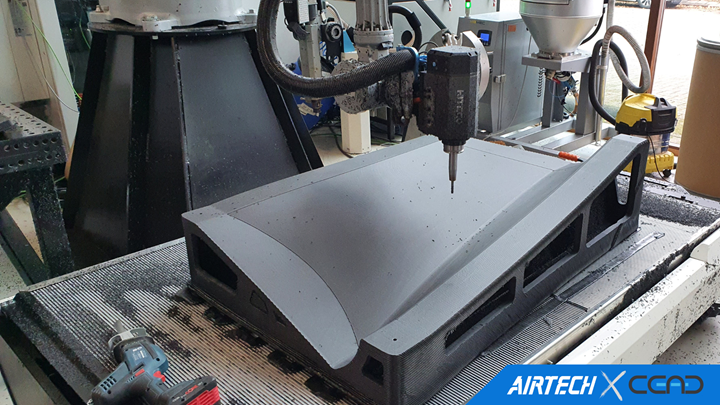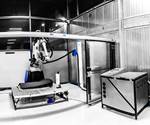CEAD qualifies Airtech Dalhtram resins for use on all AM Flexbot platforms
Combination of the robot-based system with Airtech’s extensive resin line will enhance composites AM production and performance flexibility across multiple industries.

Photo Credit: Airtech, CEAD
In addition to expanded its offering of resins for use in additive manufacturing (AM) Airtech Advanced Materials Group’s (Huntington Beach, Calif., U.S.) Dalhtram resins have been qualified for use on all CEAD (Delft, Netherlands) robot-based AM Flexbot platforms. With exceptional process knowledge, application requirements and production performance, Airtech contends that this development offers breakthrough performance and unparalleled flexibility across industries.
The AM Flexbot, one of CEAD’s solutions for large-scale composite AM, uses Comau (Turin, Italy) robots directly controlled by Siemens’ (Waltham, Mass., U.S.) Sinumerik operating system. It offers the option to combine 3D printing and milling into one automated process and provides multiple options which can be integrated to configure the system to specific needs. This versatility makes it ideal for moldmaking and tooling applications, for example, when needing to achieve a required surface finish.
Airtech Dahltram resins are suitable for multiple print platforms, offering production flexibility with end-use material validation. Airtech reports that it has continued to demonstrate efficacy in composites fabrication with extensive autoclave cycle testing across various platforms with all materials offered. Providing extensive mechanical characterization data, Dahltram resins are well suited for composites fabrication, as well as metal fabrication and direct-to-part applications.
This partnership is the latest gain in Airtech’s continued effort to drive innovation, development and testing in the AM market.
Related Content
-
Sulapac introduces Sulapac Flow 1.7 to replace PLA, ABS and PP in FDM, FGF
Available as filament and granules for extrusion, new wood composite matches properties yet is compostable, eliminates microplastics and reduces carbon footprint.
-
Large-format 3D printing enables toolless, rapid production for AUVs
Dive Technologies started by 3D printing prototypes of its composite autonomous underwater vehicles, but AM became the solution for customizable, toolless production.
-
Plant tour: Albany Engineered Composites, Rochester, N.H., U.S.
Efficient, high-quality, well-controlled composites manufacturing at volume is the mantra for this 3D weaving specialist.













